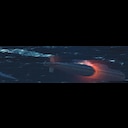Installer Steam
connexion
|
langue
简体中文 (chinois simplifié)
繁體中文 (chinois traditionnel)
日本語 (japonais)
한국어 (coréen)
ไทย (thaï)
Български (bulgare)
Čeština (tchèque)
Dansk (danois)
Deutsch (allemand)
English (anglais)
Español - España (espagnol castillan)
Español - Latinoamérica (espagnol d'Amérique latine)
Ελληνικά (grec)
Italiano (italien)
Bahasa Indonesia (indonésien)
Magyar (hongrois)
Nederlands (néerlandais)
Norsk (norvégien)
Polski (polonais)
Português (portugais du Portugal)
Português - Brasil (portugais du Brésil)
Română (roumain)
Русский (russe)
Suomi (finnois)
Svenska (suédois)
Türkçe (turc)
Tiếng Việt (vietnamien)
Українська (ukrainien)
Signaler un problème de traduction




















https://gtm.you1.cn/sharedfiles/filedetails/?id=2626659761
I have also used doglegs in the base attack.
.
Most likely the person with the trouble is starting to close. Possibly charging around the main map at full speed so starting right next to the enemy. Instead just before encounters take your finger off the mouse so you stopped or use the slow speed approach. Also spend a bit of time at the start of the battle scanning at slow speed with your towed array out to figure out the situation you are actually in.
Alternatively, they already had your position from other data - MAD or sonobuoys or towed arrays, or vessels you didn't detect or misclassified.
> Torpedoes can give one a strange love.
I see what you did there.
A master craftsman has many tools in their tool box picking the best for the job at hand. No one really expects a screwdriver to do all jobs well.